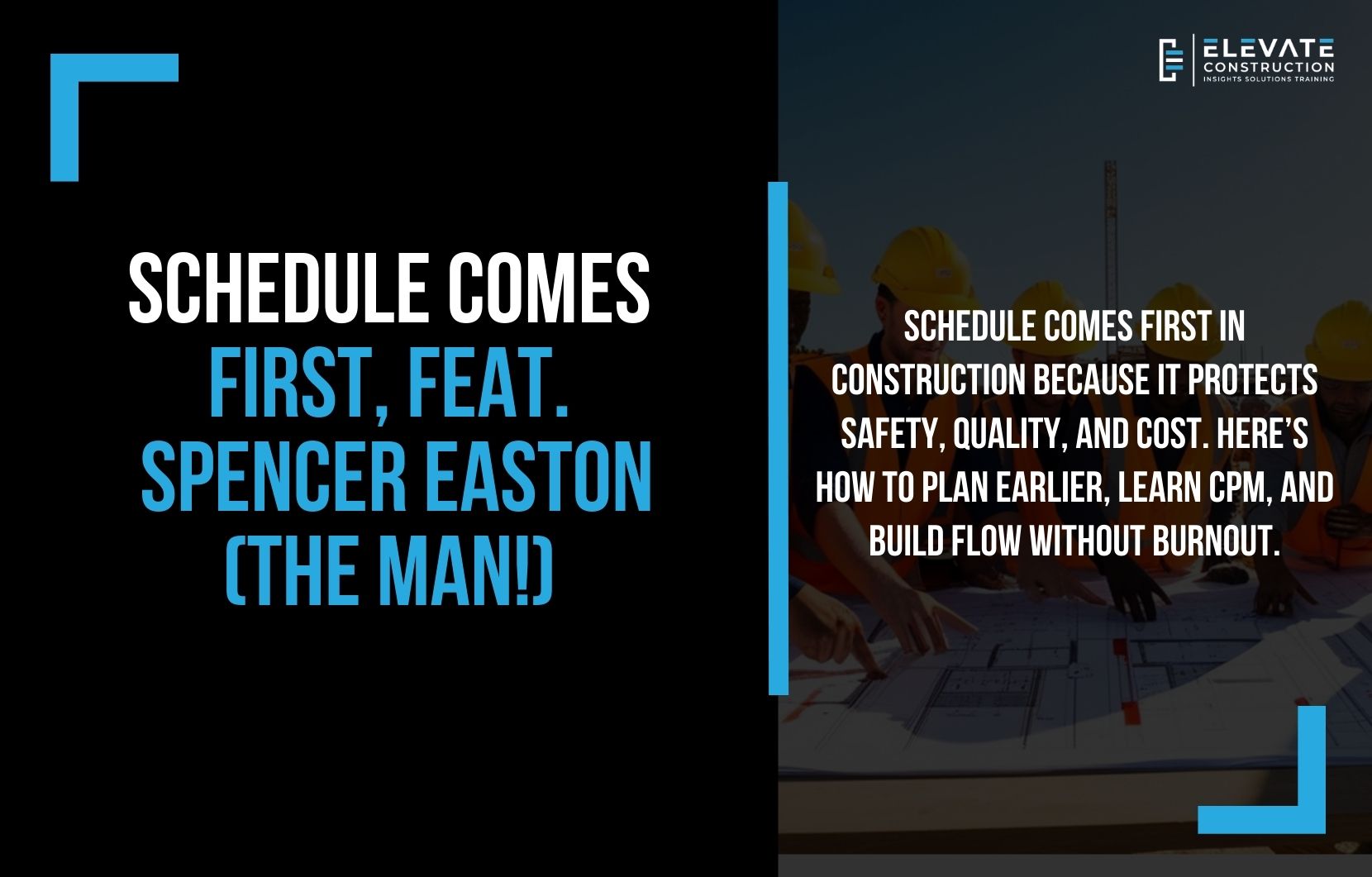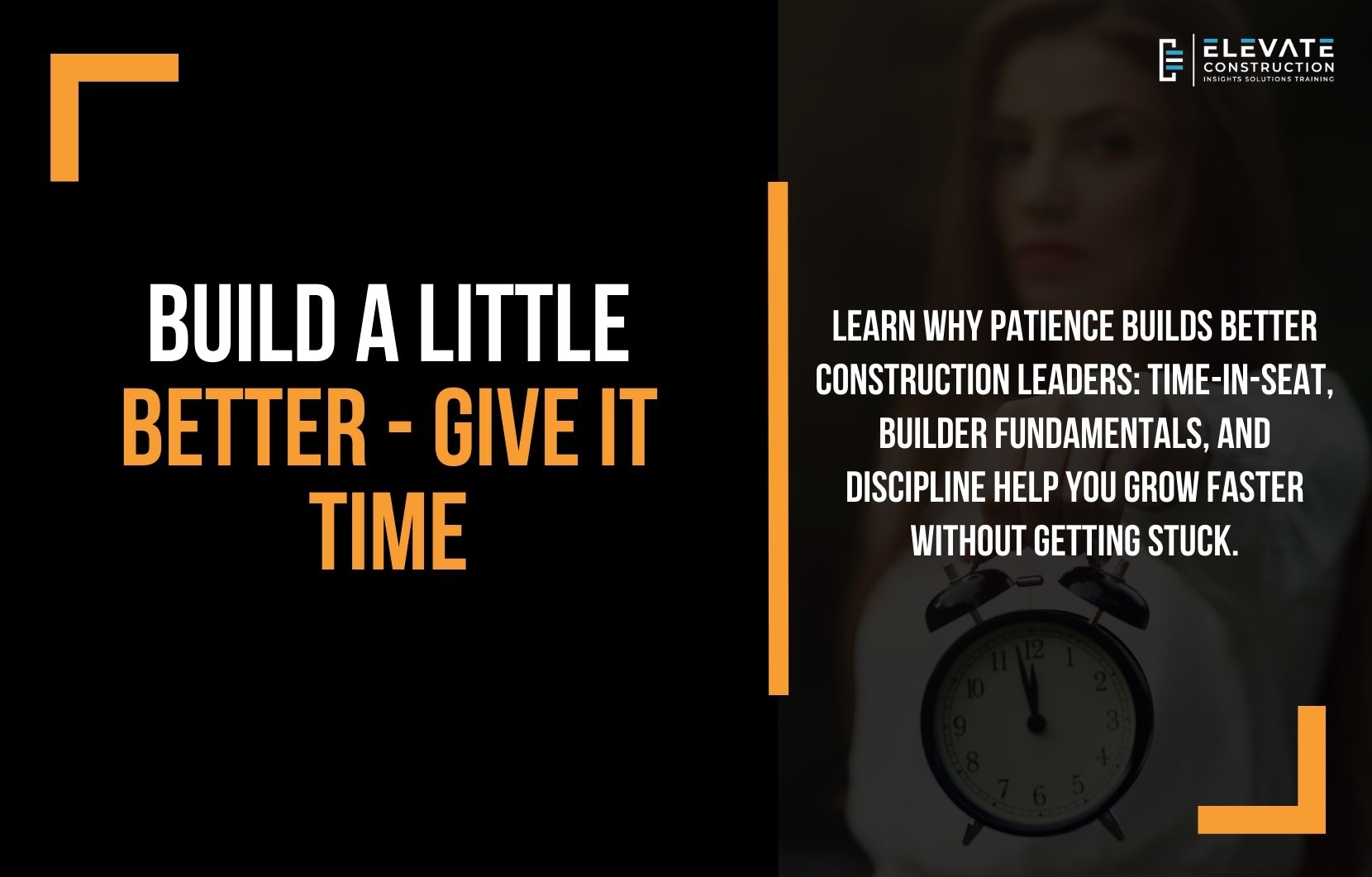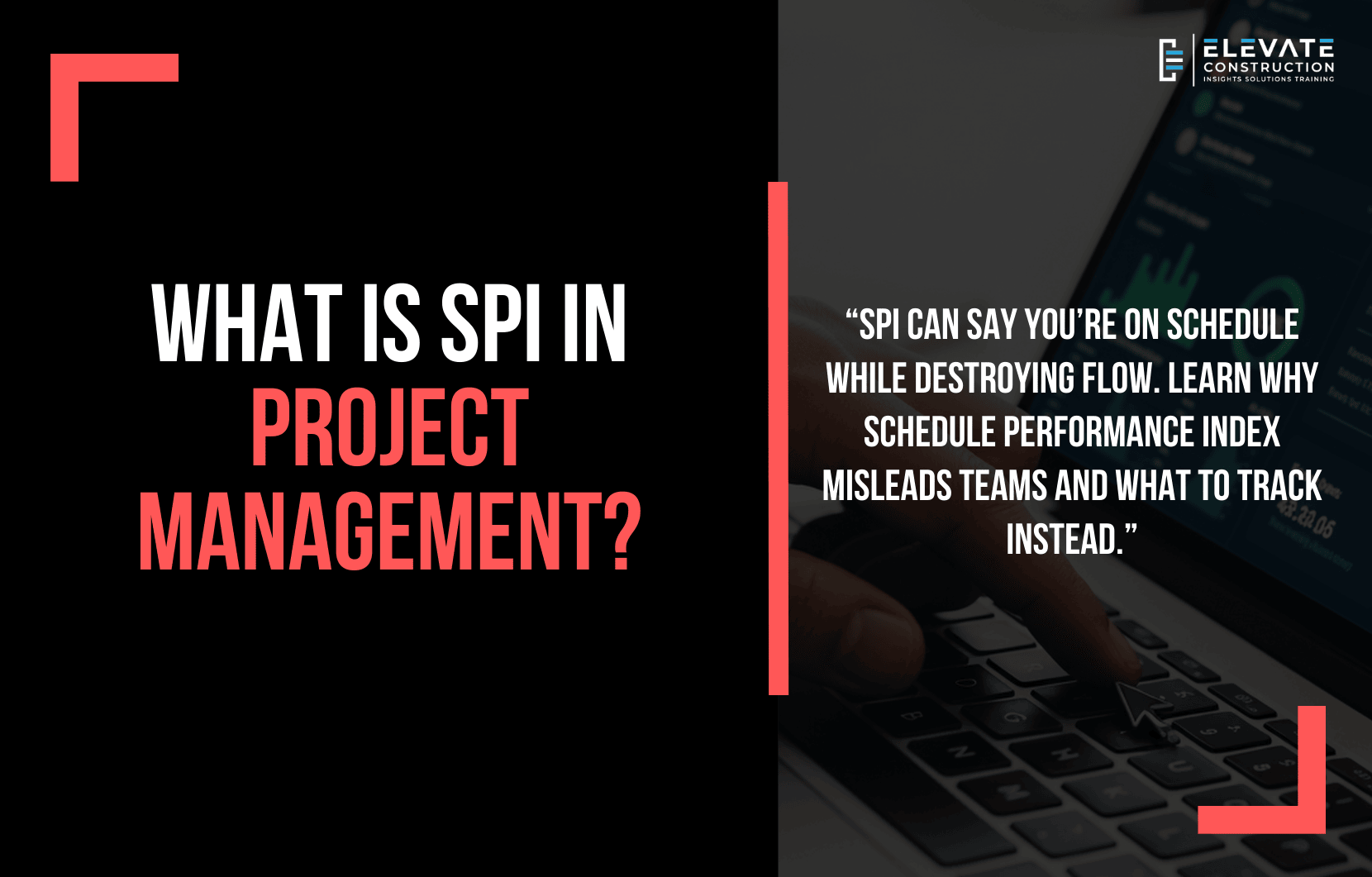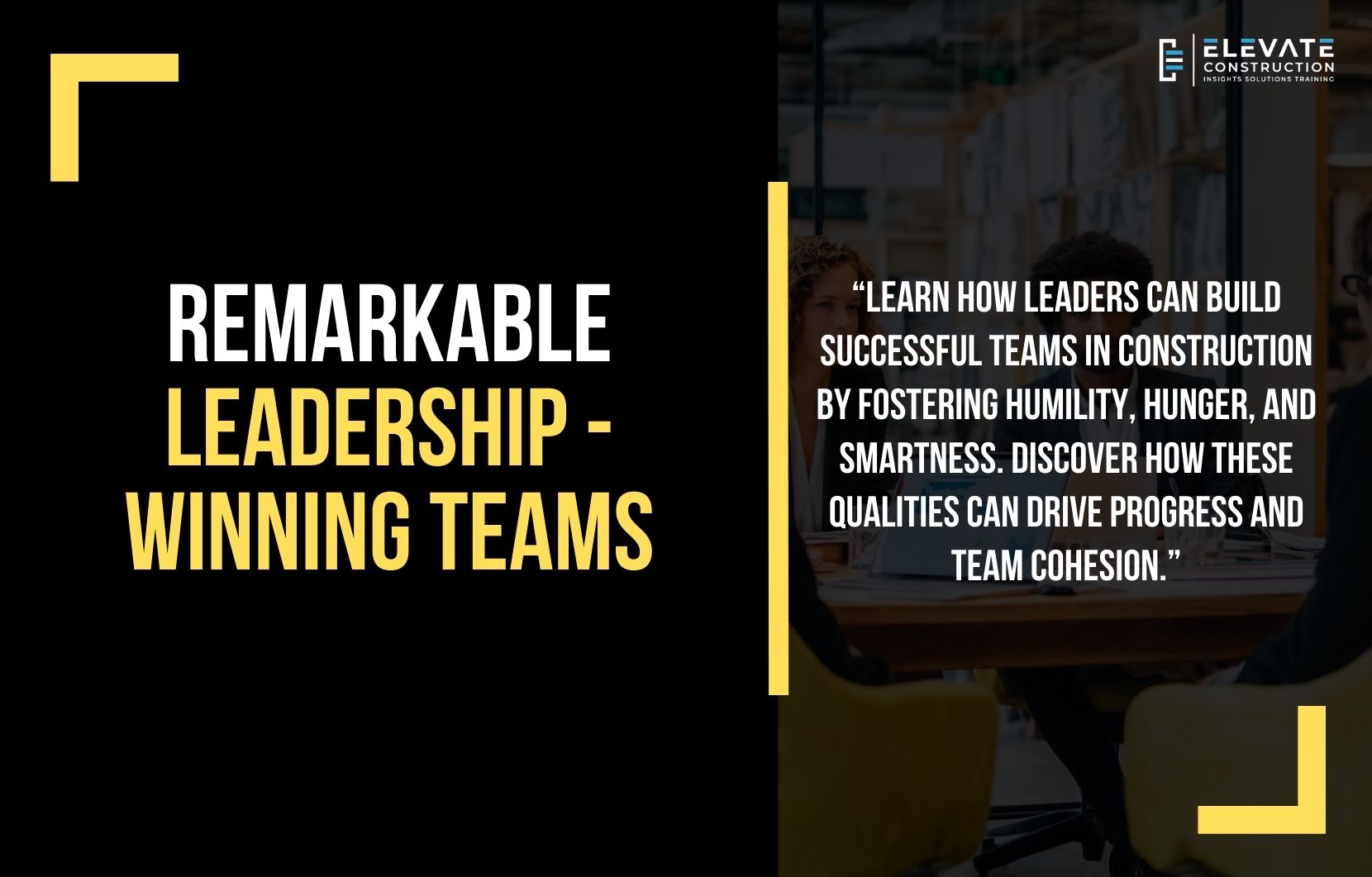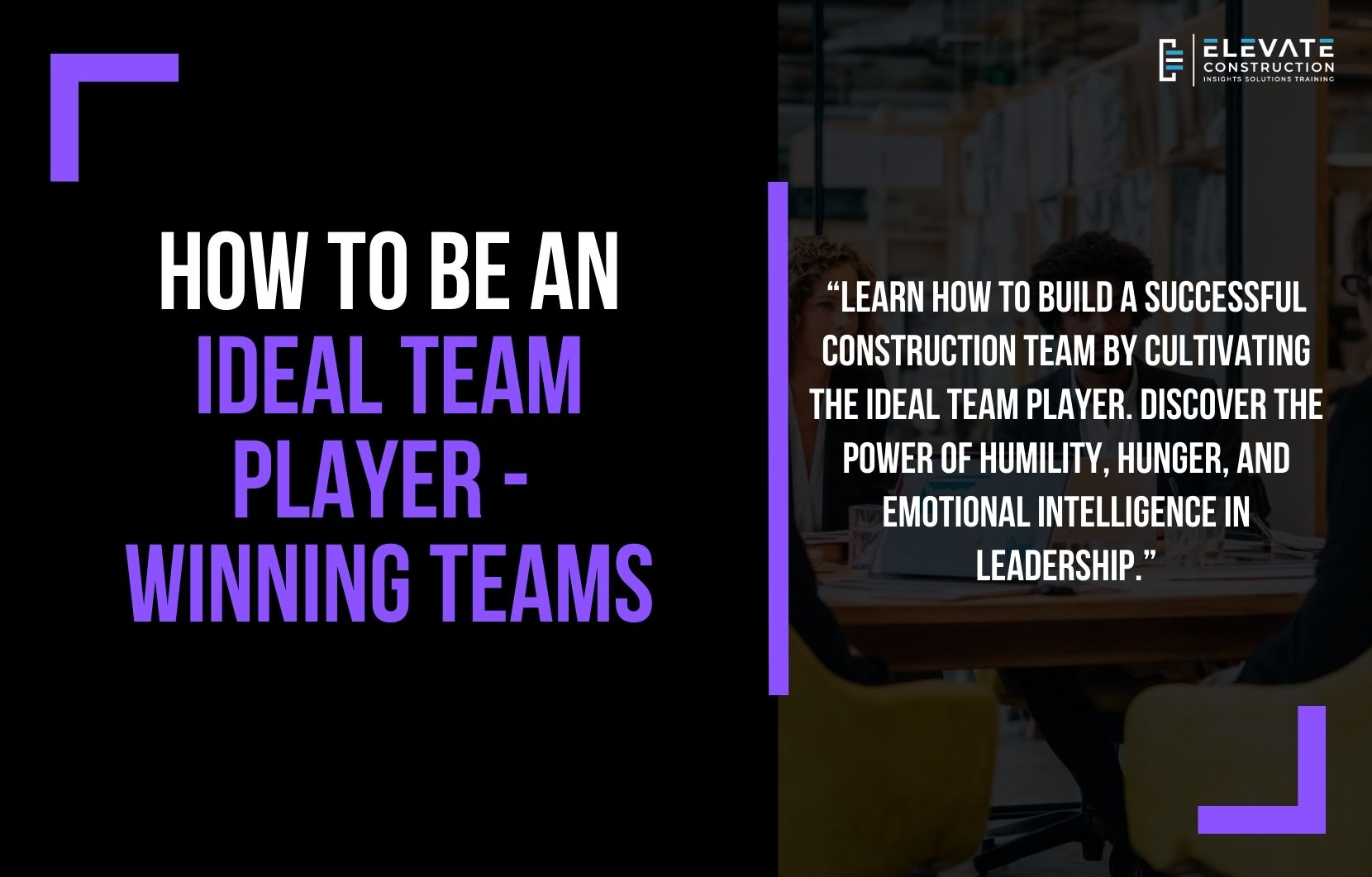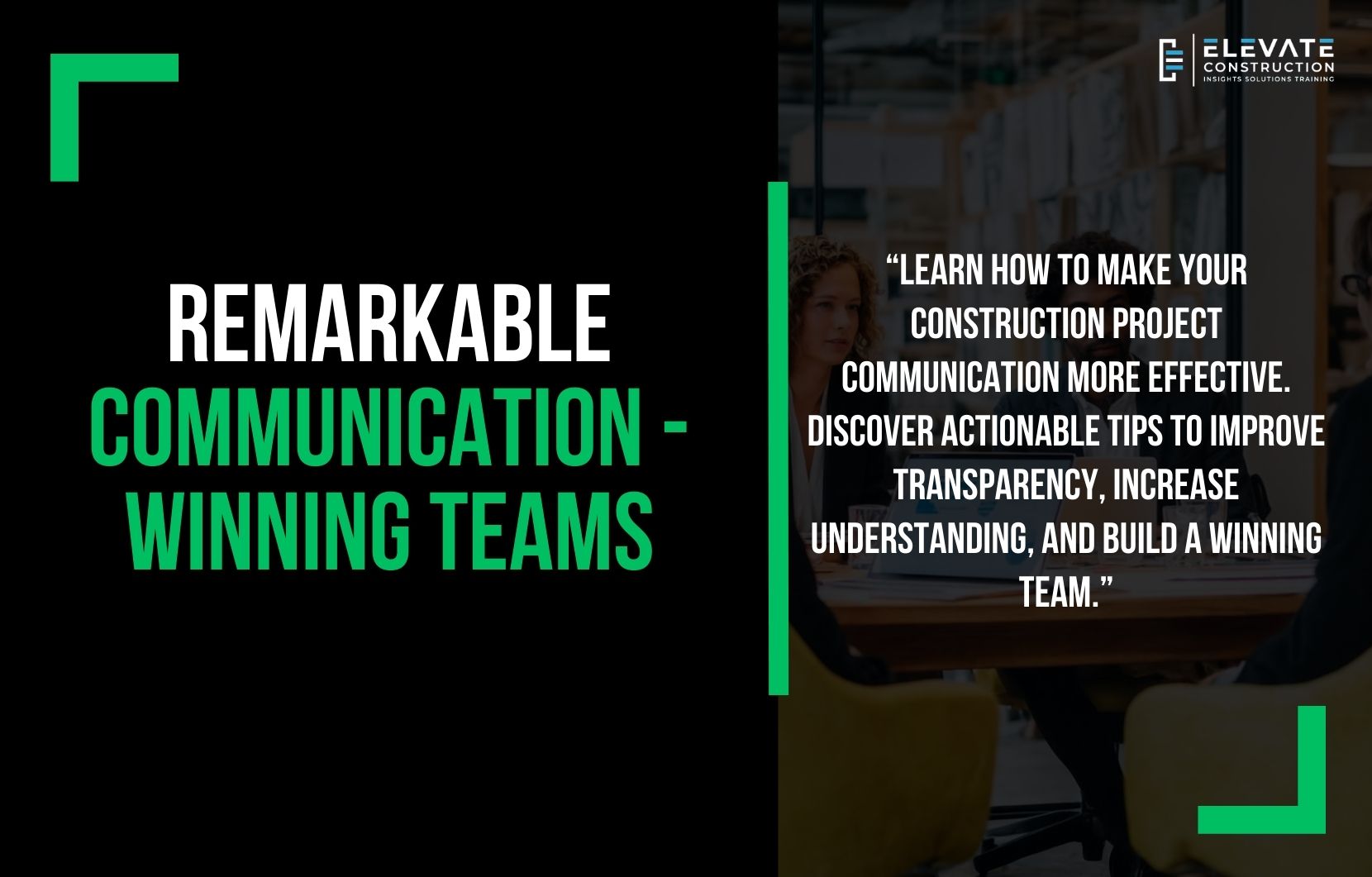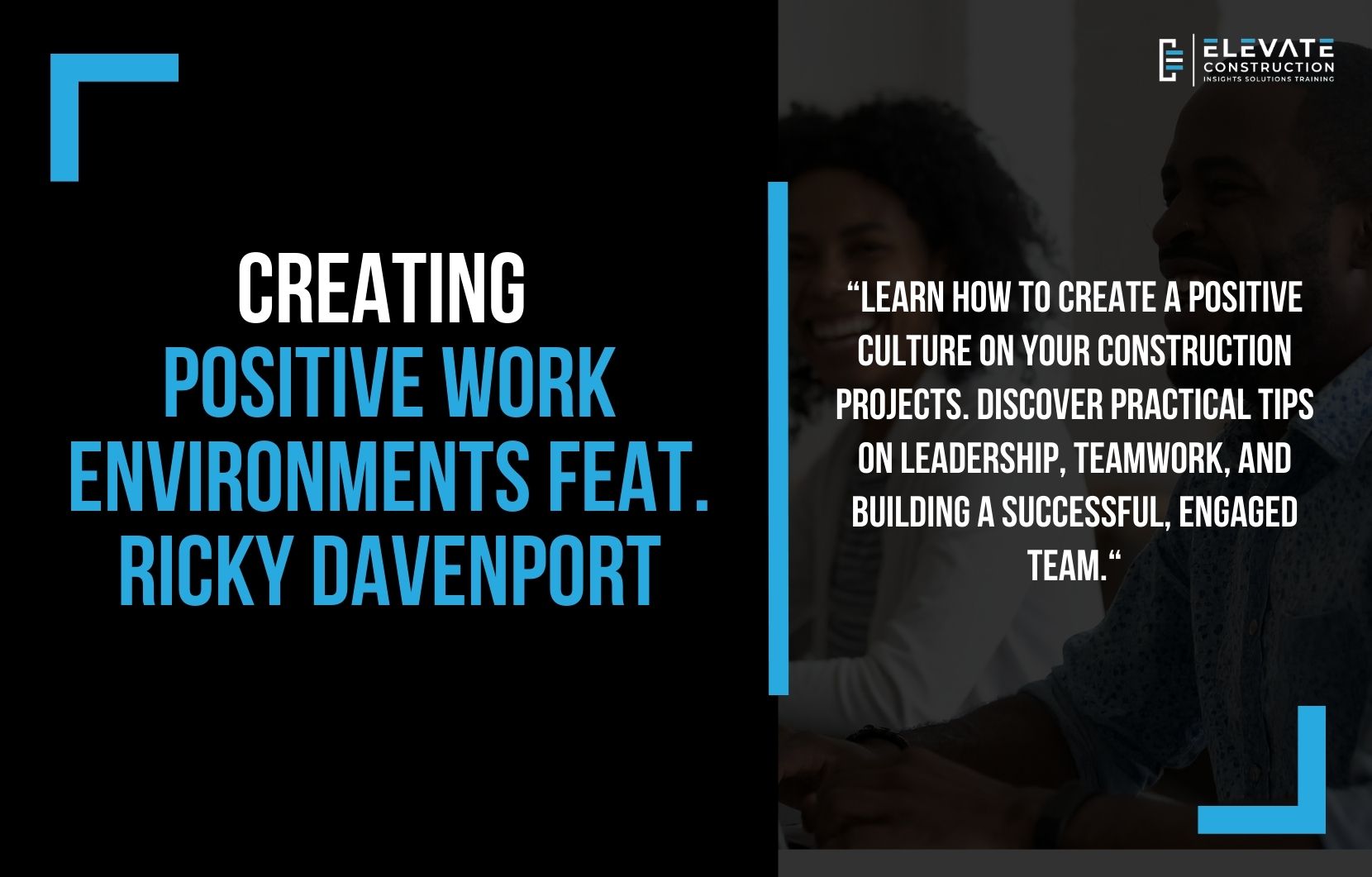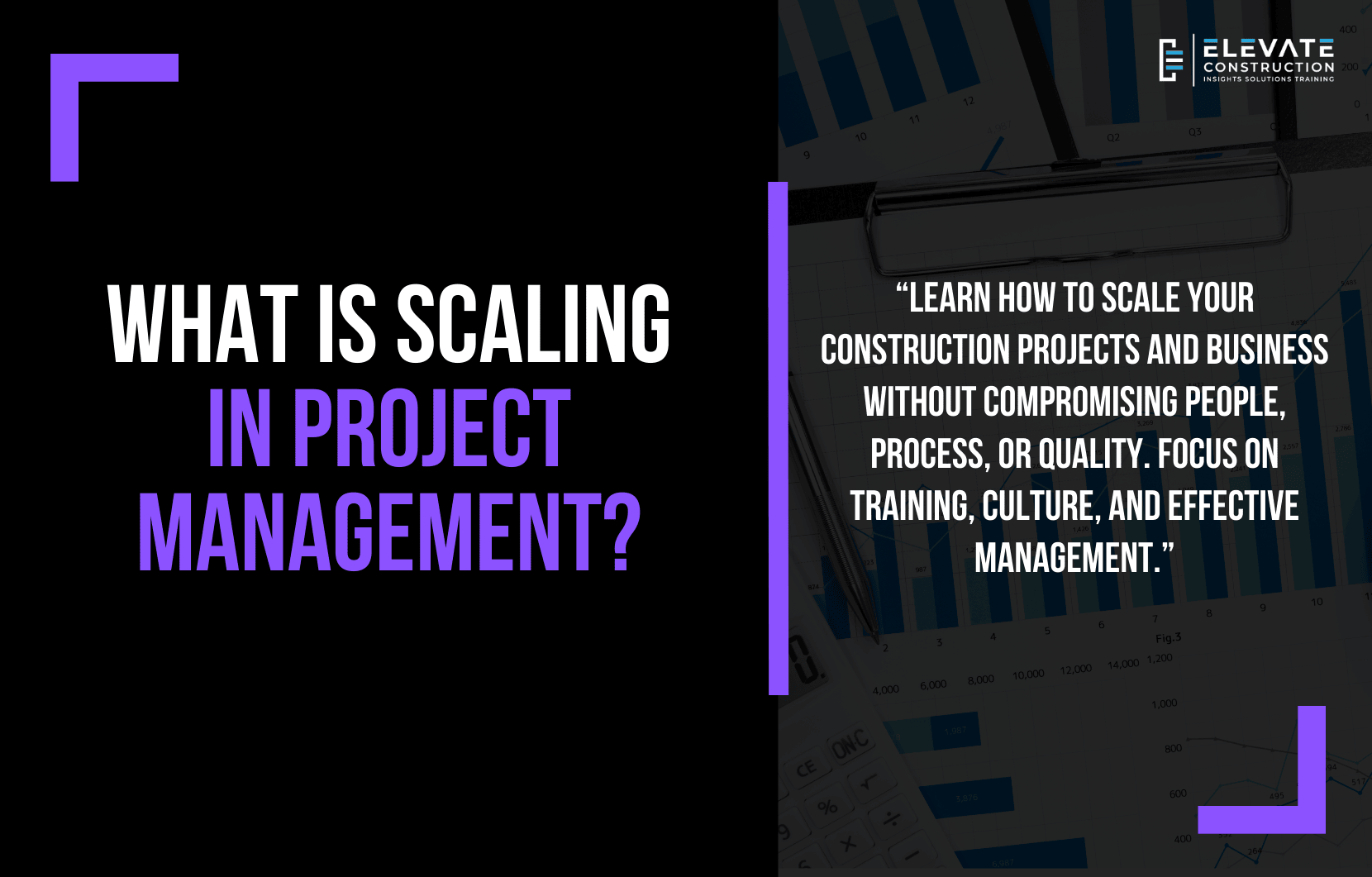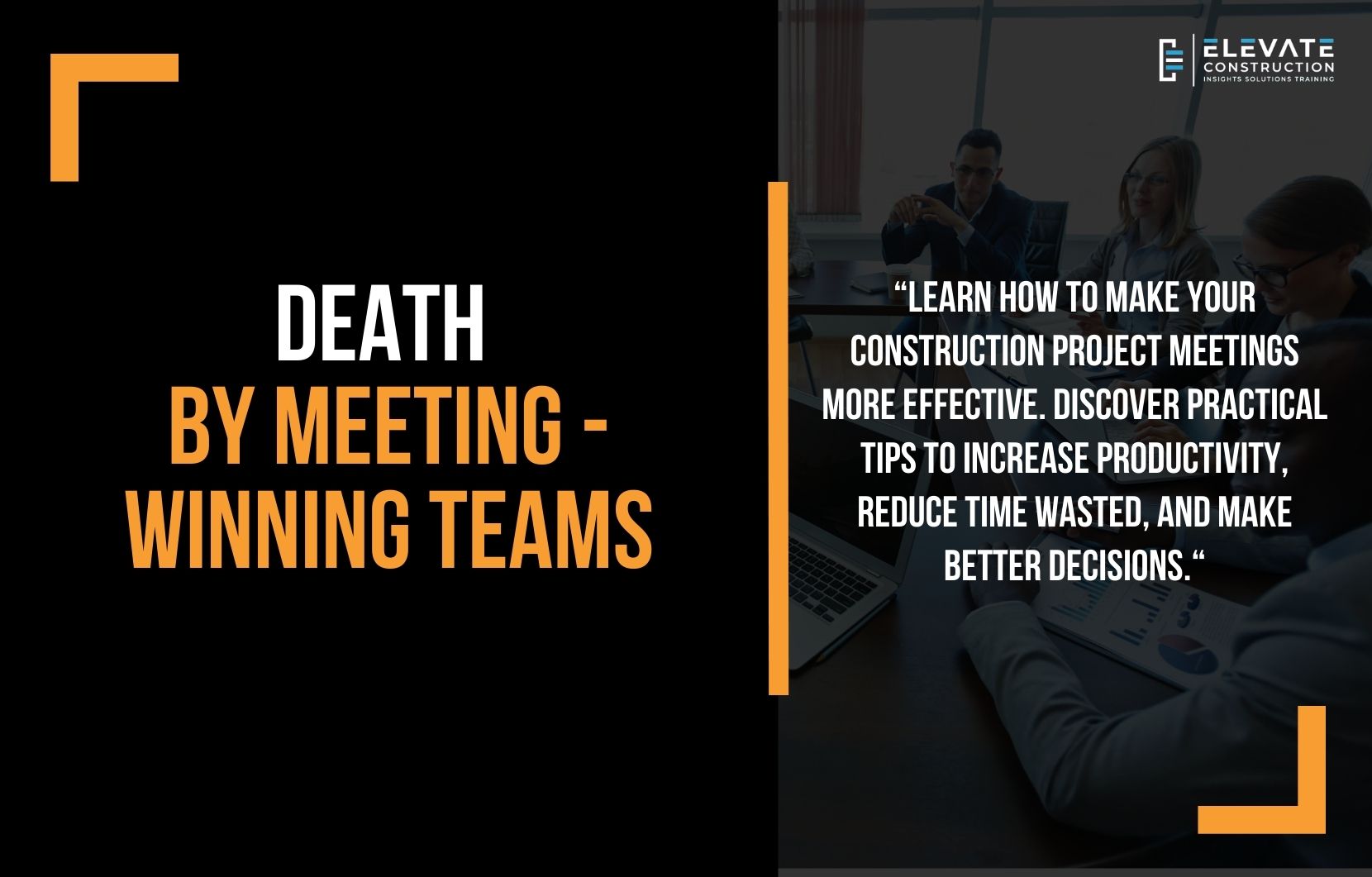Why Schedule Comes First in Construction (And How It Protects Safety, Quality, and Cost)
The industry loves to say cost, schedule, quality, and safety are all equal. That’s true—until you’re in the field and the job starts slipping. Then what happens? We “push.” We compress. We stack trades. We skip steps. We borrow time from inspections, mockups, pre-task plans, and rest. And that’s the moment we prove something important: schedule isn’t just one of the four. Schedule is the container that enables the other three. If you want safety, quality, and cost to stabilize, you have to plan the work, not chase it. That starts with the schedule.
The Real Problem: We Treat Schedule Like a Reporting Tool Instead of the Plan
Most projects build a schedule to satisfy a contract requirement, an owner meeting, or a monthly update. It’s a document we “have,” not a system we use. When a schedule is treated like reporting, the field doesn’t trust it. Superintendents build their own mental schedule. Foremen build their own micro-plan. The PM builds a financial forecast. The scheduler builds a CPM update. Now you’ve got four schedules and none of them match. The system failed them; they didn’t fail the system. The schedule has to be the shared plan. One schedule. One truth. One rhythm.
Why Schedule Comes First: It Protects Safety and Quality Before Anything Else
Here’s the core idea from the episode: cost, schedule, quality, and safety are all equal, but schedule comes first to support the other three. That doesn’t mean “schedule at any cost.” It means schedule is the first lever we must design correctly so we don’t create unsafe conditions, rework, and chaos later.
When schedule is stable, you can:
- plan scaffolding, shoring, access, and logistics,
- sequence work so crews aren’t stacked and tripping over each other,
- create time for inspections and quality hold points,
- coordinate procurement so materials aren’t late and crews aren’t idle,
- protect people from overtime-driven errors and burnout.
If the plan requires burnout, the plan is broken. Respect for people is a production strategy.
“Days Equals Dollars”: How Schedule Drives the Real Cost of the Job
In the field, we see it every day: when the schedule slips, costs don’t politely stay inside the estimate. General conditions extend. Equipment stays longer. Temp power runs longer. Supervision gets stretched. Overtime creeps in. Coordination time doubles. Days equal dollars. Every day you add costs you didn’t plan for.
What’s worse is how we respond when we’re late: we think we can buy time with overtime and stacking. Sometimes you get a short burst. But usually you create more defects, more rework, and more coordination friction which makes the job later. The schedule isn’t “just time.” Schedule is the driver of cost behavior.
The Owner Story: What Happens When a Team Plans Early
Jason shared an example where the owner required real schedule contingency and early planning. The team planned months ahead, built in buffers intentionally, and treated the schedule like a production plan not a PowerPoint slide. What changes when you plan early?
You stop guessing. You stop hoping. You start making deliberate decisions about sequence, risk, and capacity. You can see constraints coming and make-ready before they become emergencies. That’s how projects get safer and cleaner. Not by pushing harder but by planning earlier.
The Warning Story: When Budget Sets Duration and the Team Pays for It Later
The opposite scenario is painfully common: duration is set by budget or executive expectation, not by a real plan. The schedule becomes a wish, and the team is told to “make it happen.” Then reality hits. The job needs more time, sometimes months more because the plan never reflected production truth in the first place. That’s not a leadership failure by one person. That’s a system failure: planning too late, not using the schedule as a decision tool, and not integrating builders early.
Schedule as a Safety Planning Tool: Risks, Access, and the Plan to Protect People
Safety planning needs time and sequence. If the schedule doesn’t include scaffolding install, guardrail transitions, access routes, laydown changes, crane picks, and high-risk operations planning, then the field is forced to improvise. Improvisation is where injuries live. A schedule that supports safety makes the work predictable. It gives crews a stable plan, not a daily surprise. It also creates room for pre-task planning that is not rushed. Schedule is a safety system. Treat it that way.
Schedule as a Quality Trigger: Inspections, Mockups, Hold Points, and Verification
Quality isn’t something you “inspect in” at the end. It’s built through deliberate steps:
- mockups,
- first-in-place reviews,
- hold points,
- inspections,
- cure times,
- drying times,
- verification windows.
If the schedule doesn’t make space for these, quality becomes a victim of urgency. Then you get the hidden cost: rework, callbacks, schedule resets, and damaged trust. When the schedule is stable, quality can be planned. And when quality is planned, the job goes faster overall.
Flow First, Pull When You Must: Why Overburden Creates Longer Durations
Construction teams are often taught that if we’re behind, we should “push.” But pushing creates overburden: too many crews, too much WIP, too many handoffs, too much rework. Flow over busyness. This is where Takt matters. Takt is a system for stabilizing flow, limiting work in process, and creating predictable handoffs. When we plan in Takt, we protect people and production. When we ignore flow, we trade short-term activity for long-term delay.
Why Our Industry Struggles: Tools Aren’t Visual, Training Is Thin, and “Scheduler” Becomes a Crutch
CPM tools can be powerful, but they’re not naturally visual for field teams. If the schedule lives in software and never becomes a shared production plan, it won’t change behaviors. Also, we often under-train leaders in scheduling. Many superintendents and PMs never received real CPM education, so the schedule becomes “the scheduler’s job.” That’s a mistake. The schedule is the team’s job. Builders must own it. A scheduler can support, but cannot replace leadership.
How to Start Scheduling Earlier: Takt Planning at Schematic + Builders in Precon
If you want the schedule to come first, you must move it upstream. Don’t wait until after buyout. Don’t wait until the drawings are perfect. Start scheduling while design is still moving.That’s where LeanTakt and Elevate Construction systems help: you can begin Takt planning early, involve superintendents and field engineers in precon, and build a plan that reflects real production.
When builders participate early, you get:
- realistic sequencing,
- better logistics planning,
- early constraint identification,
- fewer late design surprises,
- better procurement lead-time awareness.
Plan it first, build it right, finish as you go.
The Integrated Team Requirement: PM + Superintendent + Field Align on One Schedule
One of the biggest breakthroughs is simple: one schedule that the PM and superintendent both believe in. If the schedule is “the office schedule” and the field runs a different plan, the project will drift. Aligning on one schedule means:
- shared milestones,
- shared constraints list,
- shared weekly and daily rhythms,
- shared make-ready system.
And when the whole team sees the plan, the whole team can protect the plan.
What Schedule Must Enable
- Time for safety planning: access, logistics, high-risk work prep, and transitions
- Quality hold points: mockups, inspections, verification, and cure/dry windows
- Procurement reality: lead times, submittals, approvals, fabrication, delivery
- Make-ready: constraints removal before crews show up
- Predictable flow: stable handoffs, less stacking, less rework
Challenges to Implement This Now: Learn CPM, Plan Early, Increase Urgency, Drive Schedule Upstream
This isn’t a theory. You can start this now with a few practical moves. First, learn the basics of CPM. You don’t need to become a scheduling expert overnight, but you do need to understand logic ties, critical path, float, and how updates affect the plan. Second, bring builders into precon. If the superintendent isn’t part of early planning, the plan will be missing production truth. Third, plan earlier in design. Don’t wait for 100% CDs to begin thinking through flow and sequence. Fourth, build urgency around planning, not panic around execution. The right urgency is upstream.
4 Challenges to Start This Week
- Spend 60 minutes learning CPM basics: logic, critical path, float, and updates
- Pull your superintendent into the next precon planning session and make them a co-owner
- Identify the next 6 weeks of work and remove constraints before crews arrive
- Create one shared schedule conversation per week: PM + superintendent + key partners
Connect to Mission
Elevate Construction exists to help field teams stabilize, schedule, and flow. LeanTakt is built around the idea that respect for people is a production strategy—and that stability is designed, not demanded. When we put schedules first, we’re not prioritizing time over people. We’re prioritizing planning so we don’t have to hurt people later with overburden, chaos, and rework. We’re building people who build things. If your project needs superintendent coaching, project support, or leadership development, Elevate Construction can help your field teams stabilize, schedule, and flow.
Conclusion
Here’s the challenge: stop treating schedule like a report and start treating it like a plan. Move it upstream. Involve builders early. Learn CPM well enough to understand what the schedule is telling you. Use Takt where it fits to stabilize flow. Protect inspections, mockups, and safety planning windows like your project depends on it because it does. And remember this real principle from the episode: cost, schedule, quality, and safety are all equal, but schedule comes first to support the other three.
Frequently Asked Questions:
How can schedule come first if safety is the top priority?
Schedule comes first in the planning sense because it creates time and sequence to execute safely. A stable schedule enables safe work planning, access, logistics, and proper preparation.
What’s the fastest way to reduce schedule-driven chaos?
Create one shared schedule the PM and superintendent both trust, then implement a weekly make-ready rhythm that removes constraints before crews arrive.
Do I need a full-time scheduler to have a good schedule?
No. A scheduler can help, but the team must own the plan. Leaders must understand CPM basics and use the schedule as a decision tool, not just a deliverable.
Where does Takt fit into scheduling?
Takt helps stabilize flow by aligning work packages, limiting WIP, and creating predictable handoffs. It’s especially useful when teams need rhythm and reliability in production.
What’s the biggest mistake teams make with schedules?
They build the schedule too late and treat it like a report. Planning earlier with builders involved is the biggest lever to protect safety, quality, and cost.
If you want to learn more we have:
-Takt Virtual Training: (Click here)
-Check out our Youtube channel for more info: (Click here)
-Listen to the Elevate Construction podcast: (Click here)
-Check out our training programs and certifications: (Click here)
-The Takt Book: (Click here)
Discover Jason’s Expertise:
Meet Jason Schroeder, the driving force behind Elevate Construction IST. As the company’s owner and principal consultant, he’s dedicated to taking construction to new heights. With a wealth of industry experience, he’s crafted the Field Engineer Boot Camp and Superintendent Boot Camp – intensive training programs engineered to cultivate top-tier leaders capable of steering their teams towards success. Jason’s vision? To expand his training initiatives across the nation, empowering construction firms to soar to unprecedented levels of excellence.

